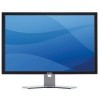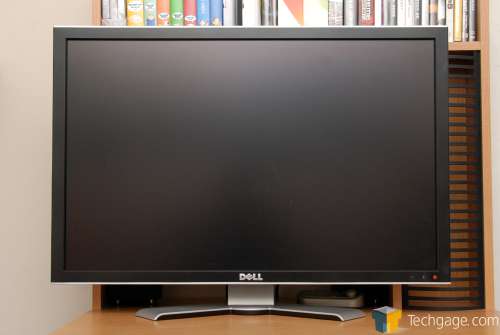- Qualcomm Launches Snapdragon 4 Gen 2 Mobile Platform
- AMD Launches Ryzen PRO 7000 Series Mobile & Desktop Platform
- Intel Launches Sleek Single-Slot Arc Pro A60 Workstation Graphics Card
- NVIDIA Announces Latest Ada Lovelace Additions: GeForce RTX 4060 Ti & RTX 4060
- Maxon Redshift With AMD Radeon GPU Rendering Support Now Available
Dell UltraSharp 3007WFP-HC Wide-Screen

The word “Awesome” is used to describe many things, but when it comes to displays, only a 30″ LCD fits. Why? They offer a 2560×1600 resolution for superb gaming and workflow. Dell’s 3007WFP-HC is also the least expensive model available on the market, but how does it perform?
Page 1 – Introduction
|
|
One great thing about our fast-paced technological world is that we are finding a continuous stream of products with superb specs wrapped into a small package. Today, it doesn’t take much effort to build a robust machine that fits into a small box right beside your TV, and by now it’s certainly not that impressive to watch movies on your cell phone. But, even though our computers continue to get smaller and more feature-packed, our monitors head in the opposite direction and continue to get larger.
Who really needs a large monitor, such as Dell’s 30″ WFP3007-HC? Well, if you have to ask that question, then it’s not you! Up until a few years ago, I used a 17″ CRT monitor full-time, and the move up to a 20″ 1680×1050 was like night and day. The extra desktop space was nothing short of amazing, not only for gaming and video, but enhanced workflow as well. At this point in time, though, 20″ LCDs are what 14″ CRTs used to be… “tiny”.
When 24″ monitors were first released, they were snatched up by enthusiasts all over, and for good reason. They are the perfect size for most people, not too big and far from being too small. Add to the fact that the 1920×1200 resolution offers a total of 2.3 million pixels (compared to 1.31 million on a 1280×1024 display), then what’s not to love? This is not to say that 24″ monitors are for everyone, but chances are good if you use one for a few hours, you will have a rough time going back to something smaller.

Once 24″ monitors began to feel like the “ultimate” display-size, Dell went ahead and released their 30″ 3007WFP, and then followed-up with a high-gamut HC version late last year. The same question as before arose once again, “Who needs such a large monitor?” Well, to answer the question, no one really needs one, but wow, they are nice to have!
Closer Look
Before taking the plunge with a 30″ monitor, there are a few things you should know. Moving up to such a large monitor is a different experience than one even a 24″ monitor will offer. One of the biggest differences you will notice right away are mouse sensitivities. Because there is so much ground to cover, you might need to increase sensitivity/DPI in order to find the perfect comfort zone.
Take into consideration that a 30″ monitor has 78% more pixels than a 24″ monitor, so using a monitor that much larger could almost be considered a small workout. Luckily though in this case, the pros outweigh most of the cons, simply because 2560×1600 is a great resolution regardless of your needs, whether it be gaming or to improve your workflow. Being able to cascade Photoshop, Word, Notepad, a calculator, Firefox, a chat client and more is a great thing.
If 30″ is tempting you because of your gaming addiction, then just be warned that such large resolutions are not for weak computers. I’ve personally found that a single GeForce 8800GTX card is more than sufficient for most of today’s games, although there are a few titles that require an even beefier GPU setup (such as Crysis). So, if your goal is to run games at 2560×1600, I highly recommend a high-end video card.
Though there are many companies that now offer 30″ displays, Dell was one of the first. Does that make them the best? It all depends on what you are looking for. If it’s a bright, feature-rich display, then no. I will get into this more shortly.
Apologies in advance for these photos, as they were taken after I had the monitor set up for a while. The original photos were lost due to a memory card issue. That aside, in the below picture you can see just how large this beast is on my small desk. It really is a piece that demands attention.
Let’s move forward as we take a look around the monitor and touch on our initial thoughts.
|
|
Support our efforts! With ad revenue at an all-time low for written websites, we're relying more than ever on reader support to help us continue putting so much effort into this type of content. You can support us by becoming a Patron, or by using our Amazon shopping affiliate links listed through our articles. Thanks for your support!






